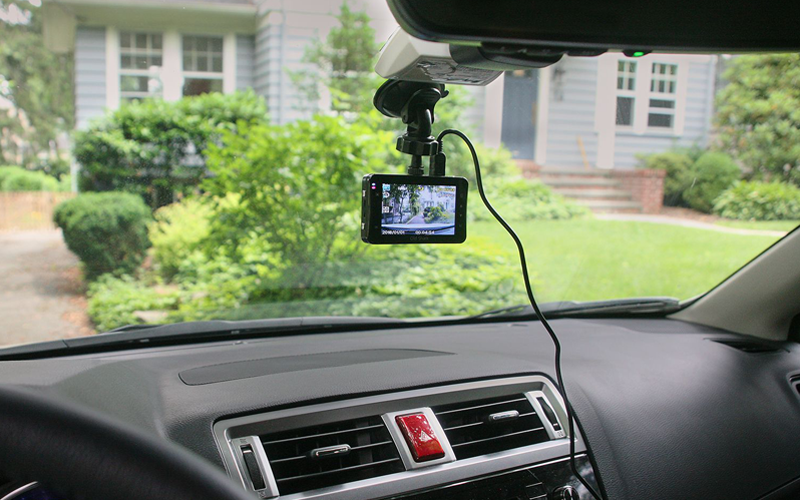While it is technically possible to utilise practically any recording device as a dash camera, there are several reasons to buy a purpose-built dash cam rather than putting anything together yourself.
There are a few key differences that distinguish dashboard cameras from other portable and handheld recording devices, all of which make them easier and more convenient to use than the alternatives.
A well set up dash cam can come in helpful even if you never get a video of someone's tyre flying off, a fellow driver putting his vehicle on fire at the gas station, or a meteor falling to the ground.
What is the Function of a Dashboard Camera?
To truly appreciate what distinguishes purpose-built dashboard cameras aside from general-purpose devices, you must first comprehend how dash cams work. Dashboard cameras, unlike general-purpose recording devices, are frequently simple affairs with few bells and whistles, such as power switches and recording controls, in favour of rock-solid operation day after day.
In actuality, a common dashboard camera is made up of simply a few key components:
A video camera is the one thing that every dash cam must have. The action is captured by the camera.
Hard-wired power inputs: If you really want to, you can use a battery-powered dash cam in your car, but you'll have to worry about charging it. You can either connect it to your vehicle's electrical system or plug it into the cigarette lighter.
Solid-state storage medium, either built-in or removable: It's fine to utilise a dash cam with built-in memory, but it's preferable if the memory can be removed. Choose a dash cam that accepts micro SD cards to save time and frustration.
In the case of dashboard cameras, form follows function, so you can probably figure out how they work just by looking at the list of components.
A dashboard camera is often wired into a circuit that is only hot when the ignition key is in the start or run position and does not have an on/off switch. You can also hook the camera into a circuit that is always hot for increased security and a minor chance of your battery dying.
Dashboard cameras are often built to record continuously whenever they are powered up because they lack any recording controls. Others include a security feature that allows them to record just when motion is detected. With that in mind, it's easy to see how these simple gadgets are designed to automatically turn on and begin recording each time a car is driven, without the driver having to do anything.
In comparison, general-purpose portable recording devices are available. Although almost any recording device can be used as a dash cam, you must switch it on and set it to record every time you get in your car. It should be easy to grasp the appeal of a purpose-built device if you envisage a situation in which it escapes your mind one day and you end up in an accident.
What Happens If the Storage Space Is Full?
You've probably seen what occurs when the storage media on a portable recording device, such as a mobile phone, digital camera, or anything else, fills up. The device immediately stops recording, and you must either free up space or insert a new memory card to continue recording.
On the surface, it appears that dashboard cameras would be a major problem. They record all the time, so you'd think they'd fill up quickly. Even if you use a large SD card for storage, it will eventually fill up, right? Who wants to mess around with memory cards while driving?
In comparison to the alternatives, this is another area where a purpose-built dashboard camera tends to truly shine. In contrast to general-purpose recording devices, dashboard cameras are often built to automatically overwrite the oldest files on their storage media if the media becomes full.
This is a feature that would be terrible if it was included into a digital camera or an iPhone since it could mistakenly destroy anything you really wanted to save, but it's perfect for surveillance and undercover gadgets.
Are there any viable alternatives to dashboard cameras?
There are acceptable solutions if you don't want to hard-wire a camera into your car's electrical system or can't afford one. It's worth noting that these options don't have the same convenience features as dashboard cameras, but that may be a trade-off you're prepared to make.
There are programmes that can turn your iPhone, Android device, or other smartphone into a dashboard camera, for example, but these aren't exactly "set and forget" solutions.
Most of the time, you'll need to mount your phone before getting in the car, launch the app, and then activate it before driving. The finest dash cam apps are intended to automatically erase old footage when storage fills up, so they operate just as well as dedicated hardware in this regard.
You can also use a camcorder or a GoPro to record, but you'll have to deal with obstacles like finding a power supply, remembering to turn the gadget on, and even manually exchanging memory cards.
For more information, visit: https://www.reviewsgala.com/





